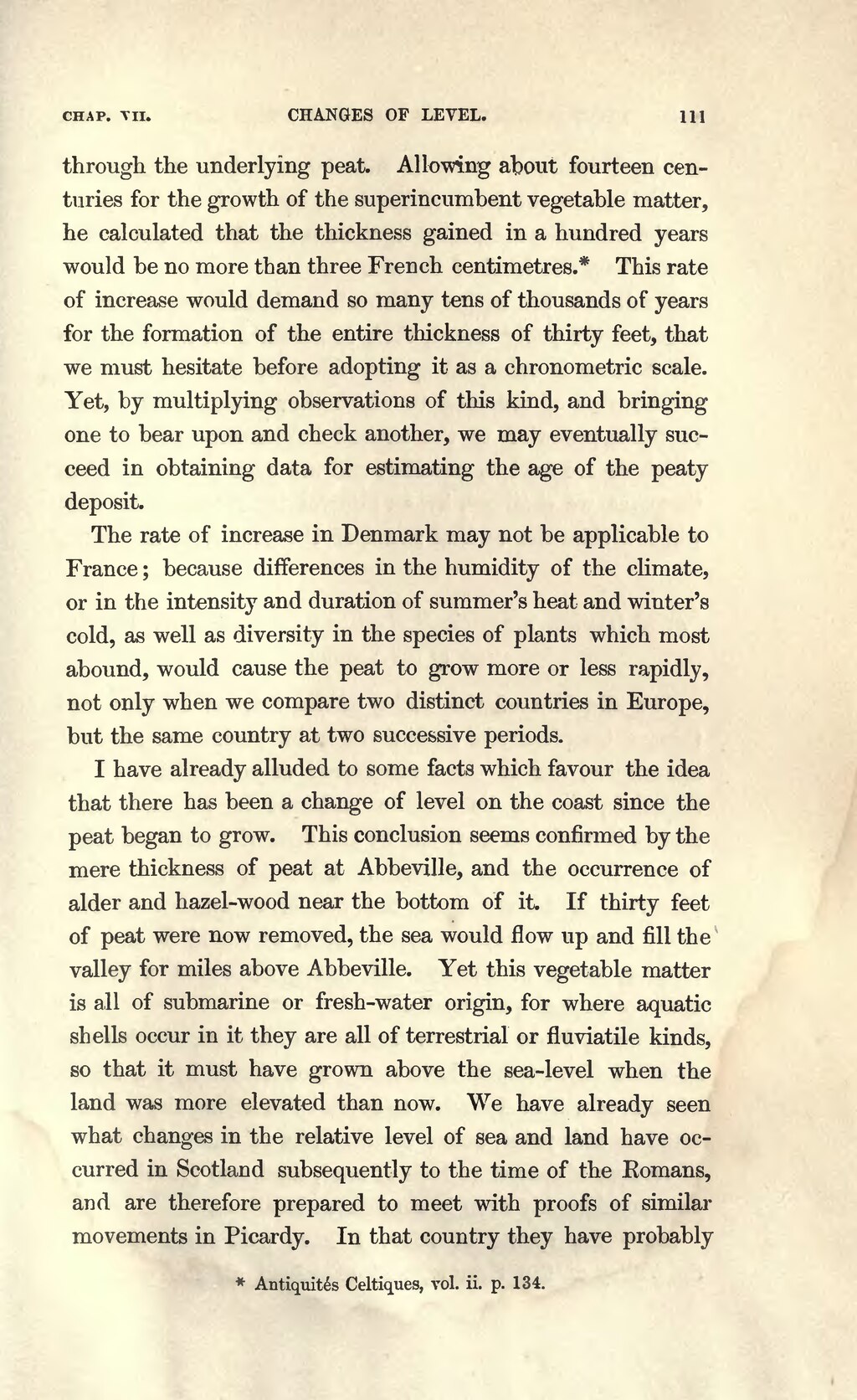through the underlying peat. Allowing about fourteen centuries for the growth of the superincumbent vegetable matter, he calculated that the thickness gained in a hundred years would be no more than three French centimetres.[1] This rate of increase would demand so many tens of thousands of years for the formation of the entire thickness of thirty feet, that we must hesitate before adopting it as a chronometric scale. Yet, by multiplying observations of this kind, and bringing one to bear upon and check another, we may eventually succeed in obtaining data for estimating the age of the peaty deposit.
The rate of increase in Denmark may not be applicable to France; because differences in the humidity of the climate, or in the intensity and duration of summer's heat and winter's cold, as well as diversity in the species of plants which most abound, would cause the peat to grow more or less rapidly, not only when we compare two distinct countries in Europe, but the same country at two successive periods.
I have already alluded to some facts which favour the idea that there has been a change of level on the coast since the peat began to grow. This conclusion seems confirmed by the mere thickness of peat at Abbeville, and the occurrence of alder and hazel-wood near the bottom of it. If thirty feet of peat were now removed, the sea would flow up and fill the valley for miles above Abbeville. Yet this vegetable matter is all of submarine or fresh-water origin, for where aquatic shells occur in it they are all of terrestrial or fluviatile kinds, so that it must have grown above the sea-level when the land was more elevated than now. We have already seen what changes in the relative level of sea and land have occurred in Scotland subsequently to the time of the Romans, and are therefore prepared to meet with proofs of similar movements in Picardy. In that country they have probably
- ↑ Antiquités Celtiques, vol. ii. p. 134.
